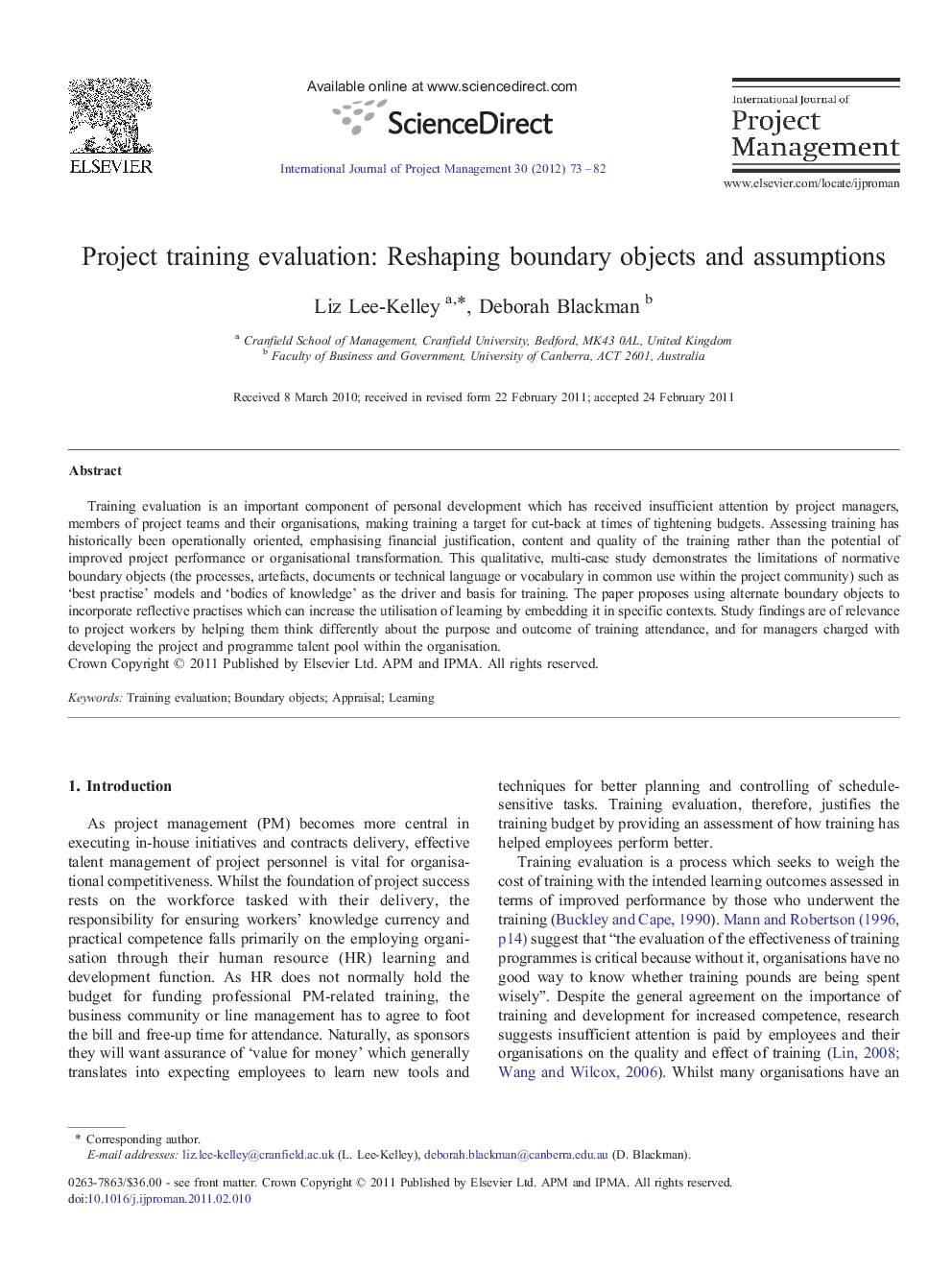| کد مقاله | کد نشریه | سال انتشار | مقاله انگلیسی | نسخه تمام متن |
|---|---|---|---|---|
| 275827 | 1429699 | 2012 | 10 صفحه PDF | دانلود رایگان |

Training evaluation is an important component of personal development which has received insufficient attention by project managers, members of project teams and their organisations, making training a target for cut-back at times of tightening budgets. Assessing training has historically been operationally oriented, emphasising financial justification, content and quality of the training rather than the potential of improved project performance or organisational transformation. This qualitative, multi-case study demonstrates the limitations of normative boundary objects (the processes, artefacts, documents or technical language or vocabulary in common use within the project community) such as ‘best practise’ models and ‘bodies of knowledge’ as the driver and basis for training. The paper proposes using alternate boundary objects to incorporate reflective practises which can increase the utilisation of learning by embedding it in specific contexts. Study findings are of relevance to project workers by helping them think differently about the purpose and outcome of training attendance, and for managers charged with developing the project and programme talent pool within the organisation.
► The importance of training evaluation for effective project management is determined.
► Limitations of normative boundary objects in enabling effective evaluation are identified.
► A paucity of know-why knowledge is identified as supporting a crisis-management cycle.
► Ways to redefine boundary objects to support know-why knowledge are discussed.
Journal: International Journal of Project Management - Volume 30, Issue 1, January 2012, Pages 73–82